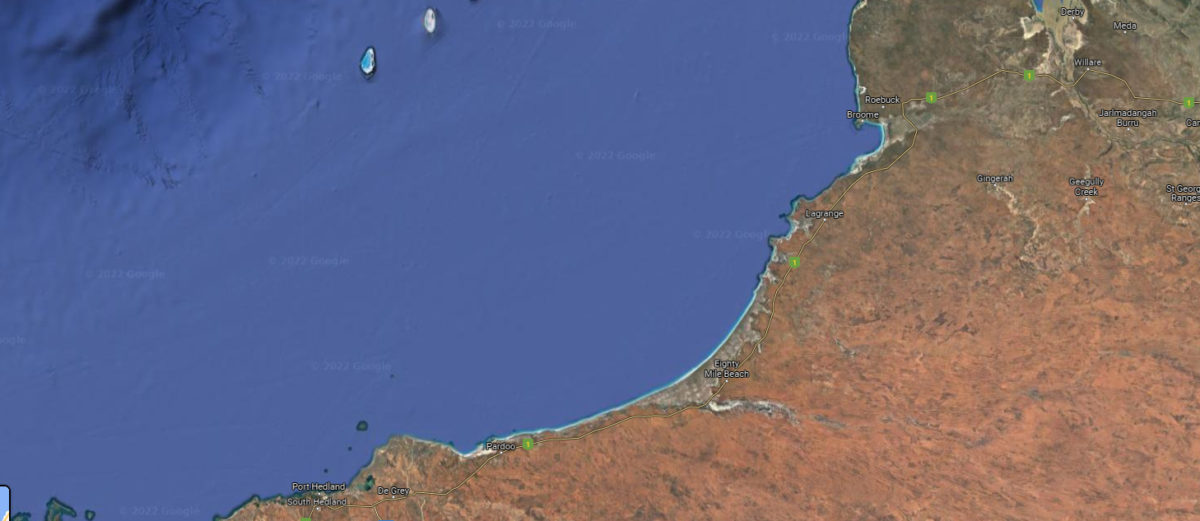Singapore's sovereign wealth fund, GIC, has estimated fund assets of US$744 billion and has just become a strategic investor in future fuels company InterContinental Energy (ICE), the business behind two proposed green hydrogen projects in Western Australia, the US$37 billion, 26GW Asian Renewable Energy Hub, and the US$70 billion, 50GW Western Green Energy Hub.
ICE is also looking to develop green hydrogen production projects in Oman and Saudi Arabia, locations which, like Western Australia, feature coastal deserts abundant in solar and wind resources plus easy access to seaborne distribution.
GIC's chief investment officer of infrastructure, Ang Eng Seng, said: “This is a strategic investment to position GIC early for the emerging hydrogen economy. We believe that, in time, hydrogen will play a crucial role in decarbonization globally and that InterContinental Energy will be a key player in this transformation.”
Demand
Last year, ICE chief strategy officer Sacha Thacker told pv magazine that when it comes to green hydrogen and ammonia there is no shortage of demand, with key sectors including marine fuels, co-fired power generation, industrial processes and heavy transport.
“Often when you have these types of transitions there is a lead country that takes up all the supply and other nations sort of hold back,” said Thacker, “but that is not what is happening this time. Everyone has agreed something needs to be done. So, there is a lot of demand and not that many choices, and even fewer choices that can be produced at scale.”
ICE's portfolio boasts 200GW of upstream onshore wind and solar said to be capable of producing 14 million tons of green hydrogen annually, or 80 million tons of green ammonia.
Commitment
ICE chief executive Alexander Tancock said the investment by GIC is exciting because the fund shares “the same long-term commitment to global decarbonization.”
Valery Tubbax, ICE's chief financial officer, said the investment by GIC “is testament to their support of the energy transition and is a key step in finding global climate change solutions, including delivering critical new infrastructure and policies to help hard-to-abate sectors adopt zero-emission fuels such as green ammonia in shipping.”
Much like the size of GIC, the scale of some of ICE's proposed projects is staggering. And while renewable energy production plants are normally constrained by the necessity of feeding into the grid, mega-scale green hydrogen and ammonia plants are prioritized for direct export, albeit with some facilities for domestic use as well.
For perspective, Australia’s largest coal plant has a generation capacity of just 2.9GW. To put it another way, the generation capacity of all the coal, gas and renewables currently in the Australian wholesale electricity market, which includes all states except Western Australia and the Northern Territory, is just over 50GW.
Intimidatingly large
Thacker told pv magazine ICE's projects are structured off templates which feature a modular roll-out. That means, while figures like 26GW and 50GW seem intimidatingly large, “it is really a dozen large scale projects on the same site. For example, on the solar side, it's … [multiple] 500MW-1GW projects that happen to be on the same site and leverage some of the same infrastructure and planning.”
Brendan Hammond, chairman of the new Western Green Energy Hub’s board, described the 50GW project as “historic,” both in terms of its scale and its partnership with First Nations landowners. According to the project group’s statement, Mirning Green Energy Limited, a wholly-owned subsidiary of the Mirning Traditional Lands Aboriginal Corporation, will have a “meaningful carried equity stake” in the project and a permanent seat on the project’s consortium board.
ICE estimates the green hydrogen sector will become a US$2.5 trillion market by 2050.
The GIC investment remains subject to approval from the Australian Foreign Investment Review Board.
This content is protected by copyright and may not be reused. If you want to cooperate with us and would like to reuse some of our content, please contact: editors@pv-magazine.com.




3 comments
By submitting this form you agree to pv magazine using your data for the purposes of publishing your comment.
Your personal data will only be disclosed or otherwise transmitted to third parties for the purposes of spam filtering or if this is necessary for technical maintenance of the website. Any other transfer to third parties will not take place unless this is justified on the basis of applicable data protection regulations or if pv magazine is legally obliged to do so.
You may revoke this consent at any time with effect for the future, in which case your personal data will be deleted immediately. Otherwise, your data will be deleted if pv magazine has processed your request or the purpose of data storage is fulfilled.
Further information on data privacy can be found in our Data Protection Policy.